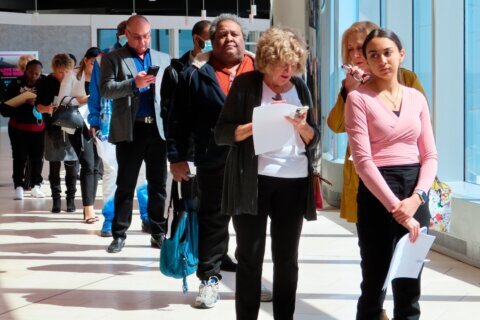WASHINGTON — The average office worker sends about 40 work emails a day and receives about 120. The way we end those emails sends a message, and it’s not always a good one.
The University of Maryland’s Robert H. Smith School of Business says if you’ve crafted a professional email that is concise and articulate, and intended to be persuasive, don’t blow it in those final, parting words, ending with a signoff that is also a turnoff.
It has put together a list of common email closings that are actually bad choices.
Among them, “Thanks in advance.”
“I think it’s presumptuous and it makes the assumption that someone is going to fulfill the request that you’ve asked for in your email,” Rachel Loock, career and leadership coach with the Smith School’s executive MBA program told WTOP.
How about the centuries-old “sincerely?”
“I don’t really think so. It has kind of a dated feel to it,” she said.
The simple smiley face has evolved into a seemingly infinite choice of emojis that can convey a sentiment, but they can send the wrong impression or distract from your message when you don’t know the recipient well.
“If it’s a good friend or a colleague you’ve been working with for a long time, I think it is perfectly fine. But I think they can come across as unprofessional or maybe even somewhat immature or maybe not in good context for a professional correspondence,” Loock said.
Other common, but unprofessional ways to signoff on work emails:
- Warmly, or Warm regards: The email’s content may have nothing to do with people who are considered warm.
- Respectfully: It comes across as phony or artificially intimate in email.
- Ciao: Unless you’re Italian, it is pretentious.
- Cheers: Acceptable only it you are British, Australian or offering to buy the recipient a drink later.
- My best: Too saccharine and overly familiar (best wishes or best regards is OK).
- Rgds or Chrs: Are you so busy that you couldn’t just type the rest of the letters?
- Anything ending with an exclamation mark: Loock says calm down. No exclamation points, ever.
The best ways to end a work email are simple. She says “thanks” or “thank you” should almost always be your signoff. People like to be thanked.
The guaranteed best way to end your email? Just your name.
Sometimes it is best not to overthink, so when in doubt simply sign your name and include your signature block.








